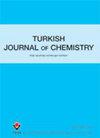新型样品制备技术对砷形态形成的影响
IF 1.3
4区 化学
Q3 CHEMISTRY, MULTIDISCIPLINARY
引用次数: 0
摘要
砷是一种造成环境污染的有害元素。由于其毒理学效应,量化和最小化其对生态的有害影响至关重要。尽管分析技术取得了重大进展,但样品制备对于确定复杂基质中的目标分析物仍然至关重要。有几个因素影响直接分析,如痕量水平分析,先进的法规要求,样品矩阵的复杂性,以及与分析仪器的不兼容。随着样品制备工艺的发展,微萃取方法在样品制备过程中发挥着重要的作用。微萃取技术(METs)是取代传统样品制备和预浓缩方法的最新绿色方法。METs最大限度地减少了传统样品制备方法的局限性,同时保留了它们的所有优点。METs提高了萃取效率,快速,自动化,使用较少的溶剂,并且适合环境。固相微萃取(SPME)无溶剂法和液相微萃取(LPME)等溶剂消耗较少的微萃取技术在现代分析过程中得到广泛应用。SPME的发展重点是合成新的吸附剂和应用在线样品制备,而LPME的研究则是研究新溶剂的利用。本文章由计算机程序翻译,如有差异,请以英文原文为准。
Arsenic speciation by using emerging sample preparation techniques: a review
Arsenic is a hazardous element that causes environmental pollution. Due to its toxicological effects, it is crucial to quantify and minimize the hazardous impact on the ecology. Despite the significant advances in analytical techniques, sample preparation is still crucial for determining target analytes in complex matrices. Several factors affect the direct analysis, such as trace-level analysis, advanced regulatory requirements, complexity of sample matrices, and incompatible with analytical instrumentation. Along with the development in the sample preparation process, microextraction methods play an essential role in the sample preparation process. Microextraction techniques (METs) are the newest green approach that replaces traditional sample preparation and preconcentration methods. METs have minimized the limitation of conventional sample preparation methods while keeping all their benefits. METs improve extraction efficacy, are fast, automated, use less amount of solvents, and are suitable for the environment. Microextraction techniques with less solvent consumption, such as solid phase microextraction (SPME) solvent-free methods, and liquid phase microextraction (LPME), are widely used in modern analytical procedures. SPME development focuses on synthesizing new sorbents and applying online sample preparation, whereas LPME research investigates the utilization of new solvents.
求助全文
通过发布文献求助,成功后即可免费获取论文全文。
去求助
来源期刊

Turkish Journal of Chemistry
化学-工程:化工
CiteScore
2.40
自引率
7.10%
发文量
87
审稿时长
3 months
期刊介绍:
The Turkish Journal of Chemistry is a bimonthly multidisciplinary journal published by the Scientific and Technological Research Council of Turkey (TÜBİTAK).
The journal is dedicated to dissemination of knowledge in all disciplines of chemistry (organic, inorganic, physical, polymeric, technical, theoretical and analytical chemistry) as well as research at the interface with other sciences especially in chemical engineering where molecular aspects are key to the findings.
The journal accepts English-language original manuscripts and contribution is open to researchers of all nationalities.
The journal publishes refereed original papers, reviews, letters to editor and issues devoted to special fields.
All manuscripts are peer-reviewed and electronic processing ensures accurate reproduction of text and data, plus publication times as short as possible.
 求助内容:
求助内容: 应助结果提醒方式:
应助结果提醒方式:


